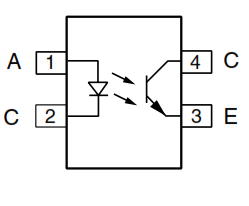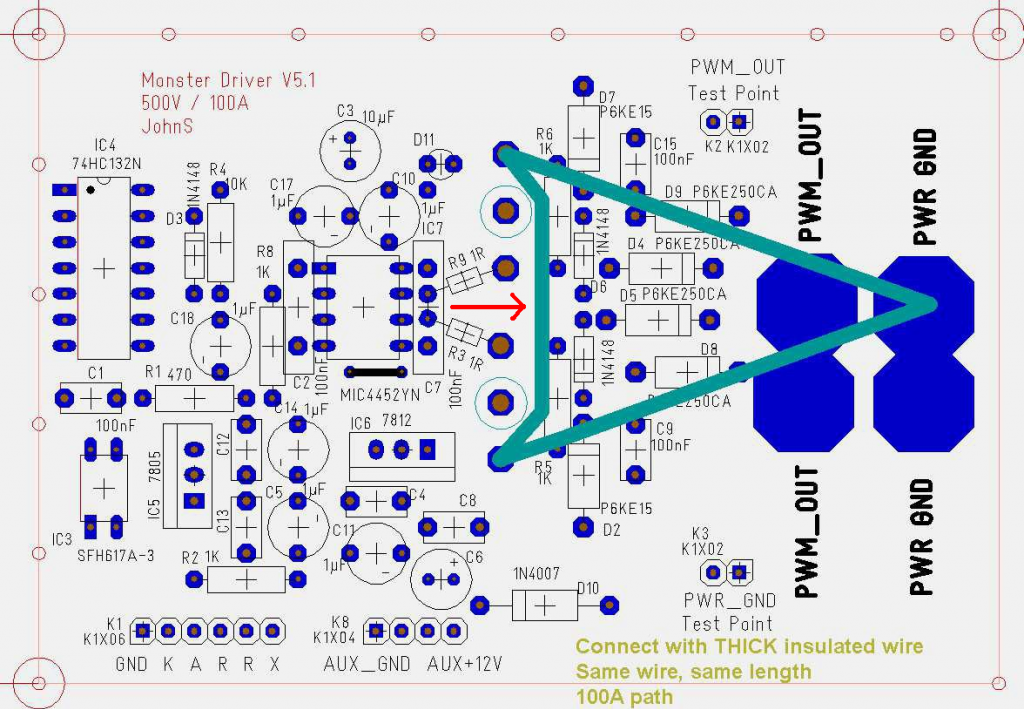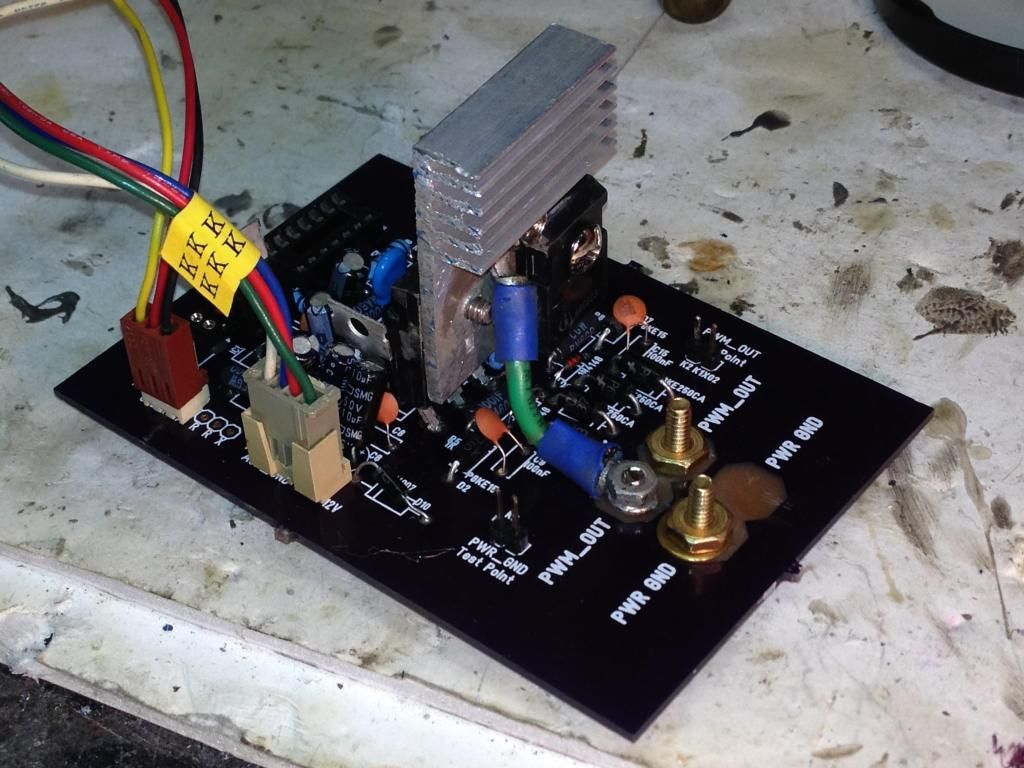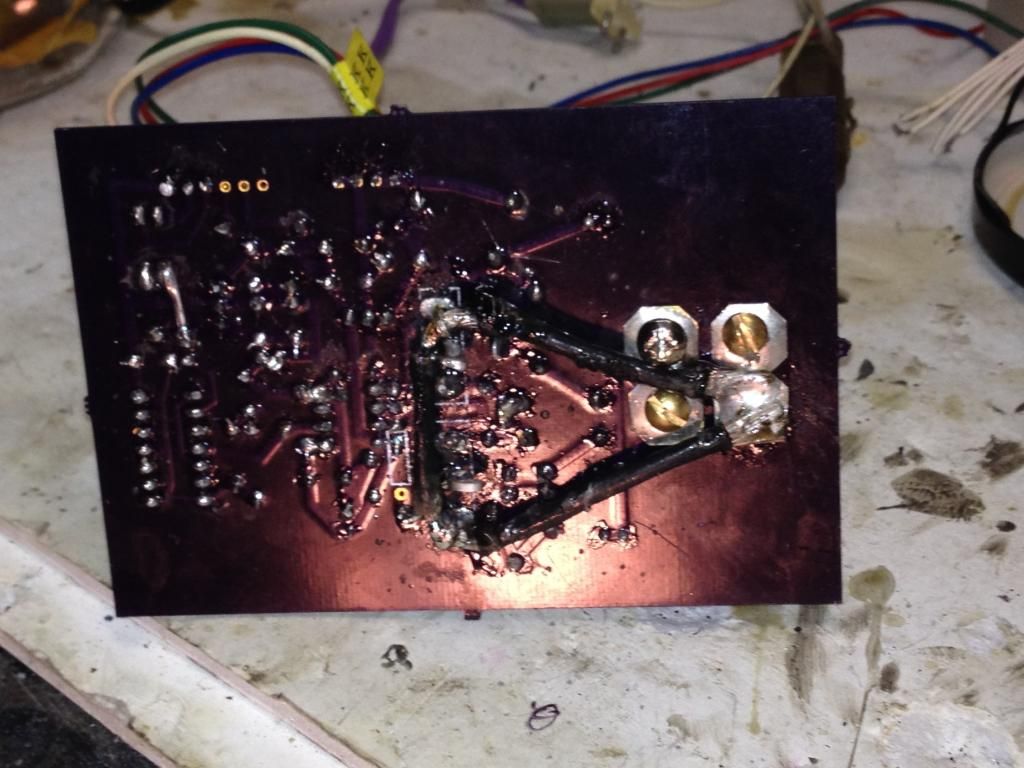Kogs EBike update
G'day Pembelton
I have not assembled the Mosfets in the wrong the way John Stone made the circuit Board is so that the gates are in the centre and the Source pins are towards the outside The drain pins are in the middle of both he used a heavy cables to connect the drain to the power out and the Source to the ground to me it was a problem to solder these heavy cables after the components were installed so I decided to use 12G high current cables and solder into the circuit board before the components, JS also made it so that the Mosfets were on the underside of the board I chose to make the board just a bit larger between the low current and high current portions so I could mount them on the top also so I could fit double Mosfets in parallel if required. these are the Boards I am showing/using here.
I also have Modded J Stone's circuit by re arranging things so that the Mosfets are assembled both the same way to make it easier to mount heat
sinks But these I am not using here.
@ Dana and all
I disassembled the 4 Mosfets in the board I just Blew it was just the Mosfets.
I have just replaced the 2 Mosfets to the first board I just have blown the Source pins were totally disintegrated. I re connected this board to the same circuit except I disconnected the Capacitors It works just Fine. This proves to me that the caps are the problem, BUT HOW am I going to overcome this Problem
I re connected this board to the same circuit except I disconnected the Capacitors It works just Fine. This proves to me that the caps are the problem, BUT HOW am I going to overcome this Problem 
The Caps I used on the bench for testing are super caps but the ones in my Bike are Electrolytic ones
Kindest Regards

Kogs working overtime
Originally posted by Pembelton
View Post
I have not assembled the Mosfets in the wrong the way John Stone made the circuit Board is so that the gates are in the centre and the Source pins are towards the outside The drain pins are in the middle of both he used a heavy cables to connect the drain to the power out and the Source to the ground to me it was a problem to solder these heavy cables after the components were installed so I decided to use 12G high current cables and solder into the circuit board before the components, JS also made it so that the Mosfets were on the underside of the board I chose to make the board just a bit larger between the low current and high current portions so I could mount them on the top also so I could fit double Mosfets in parallel if required. these are the Boards I am showing/using here.
I also have Modded J Stone's circuit by re arranging things so that the Mosfets are assembled both the same way to make it easier to mount heat
sinks But these I am not using here.
@ Dana and all
I disassembled the 4 Mosfets in the board I just Blew it was just the Mosfets.
I have just replaced the 2 Mosfets to the first board I just have blown the Source pins were totally disintegrated.
 I re connected this board to the same circuit except I disconnected the Capacitors It works just Fine. This proves to me that the caps are the problem, BUT HOW am I going to overcome this Problem
I re connected this board to the same circuit except I disconnected the Capacitors It works just Fine. This proves to me that the caps are the problem, BUT HOW am I going to overcome this Problem 
The Caps I used on the bench for testing are super caps but the ones in my Bike are Electrolytic ones
Kindest Regards
Kogs working overtime








Comment